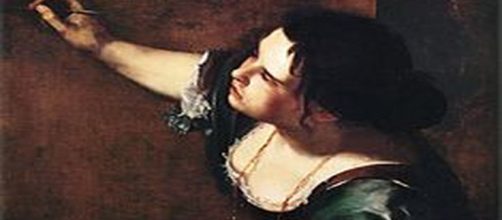The suicide of raped noblewoman Lucretia in 6th century B.C., that turned Rome from a monarchy to a Republic, was memorialized in 1620 by Artemesia Gentileschi, herself a rape victim. Her painting goes on sale at the Dorotheum auction house in Austria on Oct. 23. Lucretia's story has been a popular subject in both painting and sculpture and has even been turned into an opera, “The Rape of Lucretia,” staged by Agnes de Mille and performed on Broadway, at the Ziegfeld Theatre, in 1948.
Sign of the times
Lucretia's story, first recounted by ancient historians Livy of Rome and Dionysius of Greece, details her suicide in 510 B.C.
after being raped by the son of the then Roman emperor. Outrage in the city about the emperor's cavalier attitude to Lucretia brought down the monarchy and turned the government into a republic. While the story is an ancient one, it seems particularly relevant today given the president's cavalier attitude towards women. Speaking to this point, Mark McDonald, Old Master specialist at the Dorotheum auction house, alluded to it in his remarks about Gentileschi's “Lucretia” to the Art Newspaper on August 23. He said that while her work fell out of favor during the 18th and 19th centuries because it was “too dramatic, too violent, too indelicate” for a polite society. “I think their power resonates with today's climate.”
Female complaint
What's more, like the fate of the Roman monarchy, the duration of Trump's reign has been called into question over his dealings with Michael Cohen to silence female complaints.
Business Insider reported on July 26, “People in Trump's world now consider Michael Cohen to be the greatest threat to Trump’s presidency.” But when it comes to female complaints, Gentileschi leads the pack with paintings that portrayed embattled women from mythology and ancient history, likely owing to the assault she suffered as a teenager. Fighting back with her painting made her a kind of poster child for the #MeToo movement against male domination.
Not a pretty picture
Of course, many other artists have taken on Lucretia's story for their subject matter, but there's a key difference between Gentileschi's version and the others. She didn't prettify the painting of this tragic figure as, say, Paolo Veronese did.
In depicting Lucretia pulling the dagger from her chest, blood clearly in view, he portrayed her as bejeweled and carefully robed and coiffed. In contrast, Gentileschi left out the jewels, which normally adorned this noblewoman's person, and showed her, instead, after being raped – disheveled. Her “Lucretia” is a portrait of a state of mind, not the fashion of the day.


